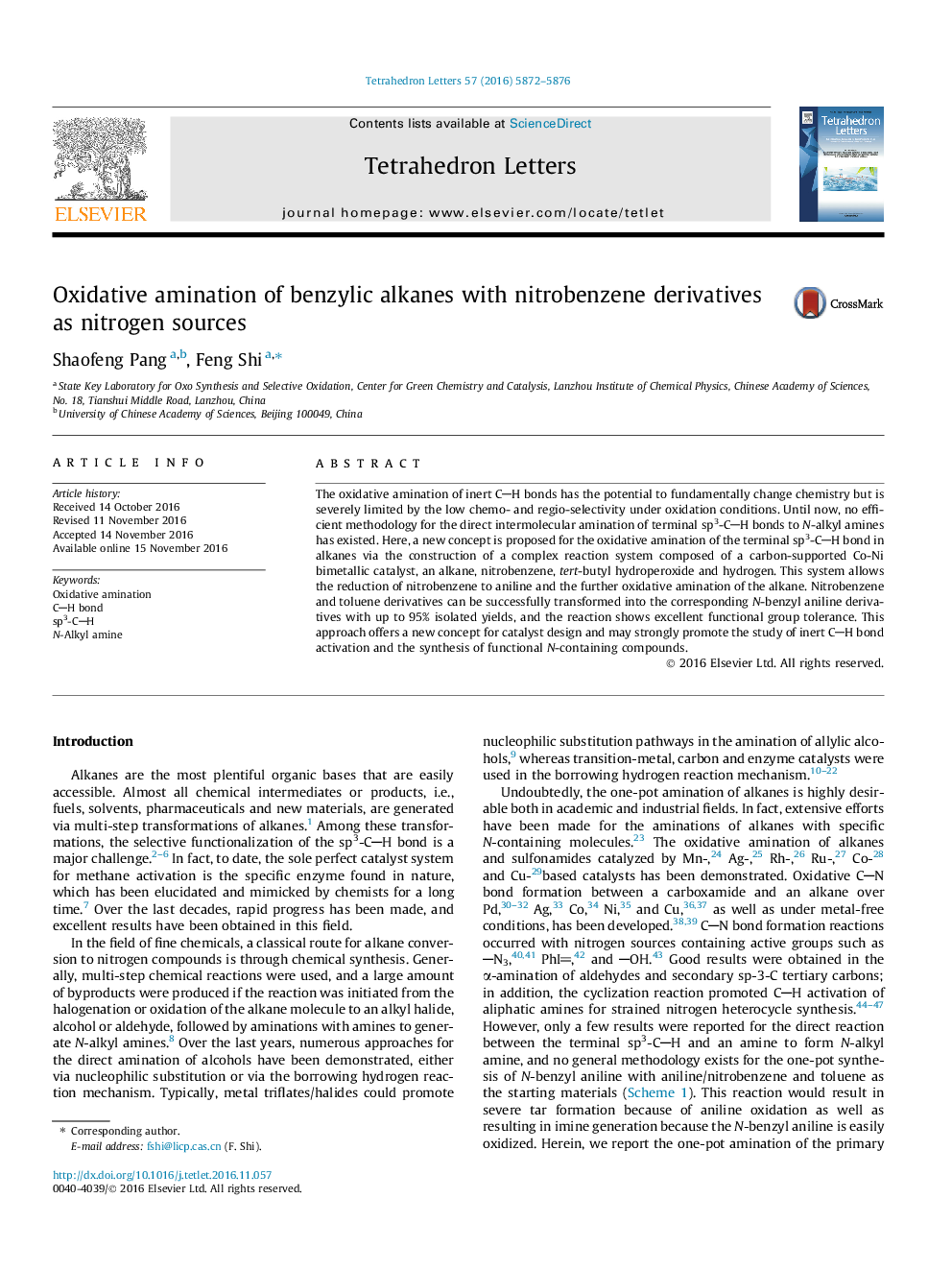| Article ID | Journal | Published Year | Pages | File Type |
|---|---|---|---|---|
| 5258097 | Tetrahedron Letters | 2016 | 5 Pages |
â¢Intermolecular amination of sp3-C-H bonds with nitrobenzene was realized.â¢Excellent reducible and oxidizable functional groups toleration.â¢Isotope tracing reactions revealed oxidative amination mechanism.â¢Co-Ni alloy nano-particle might be the active catalyst species.
The oxidative amination of inert CH bonds has the potential to fundamentally change chemistry but is severely limited by the low chemo- and regio-selectivity under oxidation conditions. Until now, no efficient methodology for the direct intermolecular amination of terminal sp3-CH bonds to N-alkyl amines has existed. Here, a new concept is proposed for the oxidative amination of the terminal sp3-CH bond in alkanes via the construction of a complex reaction system composed of a carbon-supported Co-Ni bimetallic catalyst, an alkane, nitrobenzene, tert-butyl hydroperoxide and hydrogen. This system allows the reduction of nitrobenzene to aniline and the further oxidative amination of the alkane. Nitrobenzene and toluene derivatives can be successfully transformed into the corresponding N-benzyl aniline derivatives with up to 95% isolated yields, and the reaction shows excellent functional group tolerance. This approach offers a new concept for catalyst design and may strongly promote the study of inert CH bond activation and the synthesis of functional N-containing compounds.
Graphical abstractDownload full-size image
